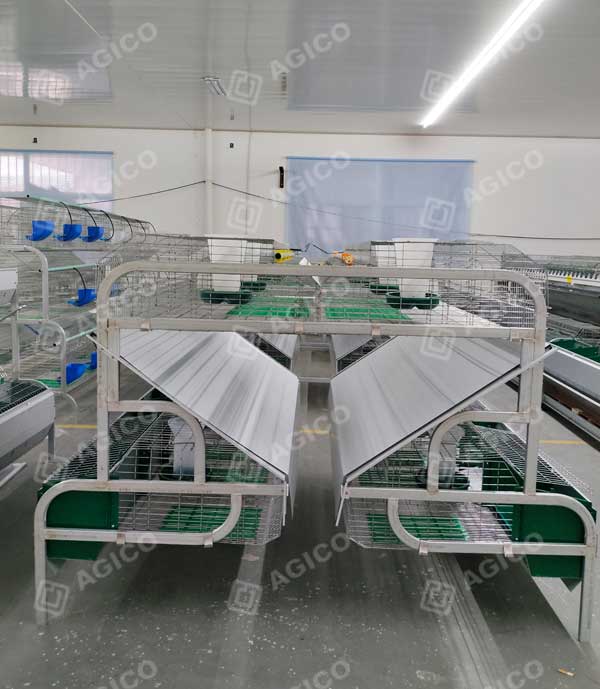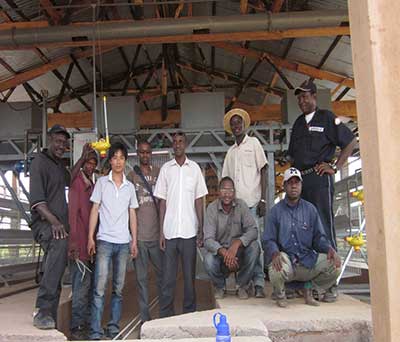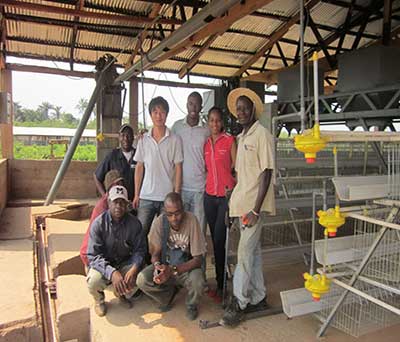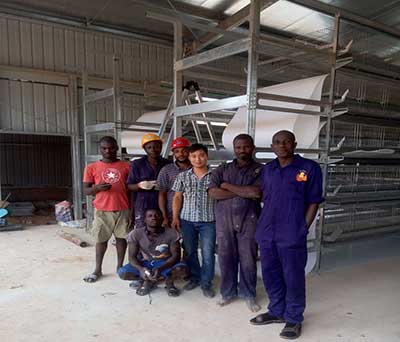When designing and selecting commercial rabbit cages, understanding appropriate dimensions or sizes and design essentials is very important.Choosing the right size for a commercial rabbit cage involves several considerations to ensure the health and well-being of the rabbits.
How to Choose Commercial Rabbit Cage Size?
Choosing the appropriate rabbit cage size and design begins with understanding the specific purpose of the cage. Different types of commercial rabbit cages serve distinct functions, and each type must be tailored to meet the unique needs of the rabbits housed within them.
Purpose of the Commercial Rabbit Cage
Commercial Rabbit Breeding Cages
Commercial rabbit breeding cages are designed for female rabbits that are kept for breeding purposes. These cages need to be larger than typical cages for several reasons.
- Breeding Boxes: The commercial rabbit breeding cages must have enough space to accommodate a breeding box where the mother rabbits can give birth and care for her baby rabbits. The breeding box or nesting box should be spacious enough for the mother rabbit to move around comfortably and provide a safe environment for the kits.
- Room for Baby Rabbits: After the kits are born, they will need space to grow and move around until they are weaned. A larger cage ensures that the mother rabbit and her kits are not cramped, reducing stress and promoting healthy development.
- Health and Hygiene: More space facilitates better hygiene, as it allows for easier cleaning and maintenance, reducing the risk of disease.
Grow-out Rabbit Cages
Grow-out rabbit cages are used for young rabbits that have been weaned from their mothers but are not yet fully grown. These cages serve as transitional housing before the rabbits reach maturity. Key considerations for grow-out cages include:
- Adequate Space for Movement: Although these grow-out rabbit cages can be smaller than rabbit breeding cages, they must still provide enough room for the young rabbits to move around, exercise, and grow without restrictions.
- Separation of Genders: To prevent unwanted breeding and manage growth rates, grow-out rabbit cages should be designed to house rabbits of the same gender together or separately, depending on management practices.
- Easy Access for Monitoring: Grow-out rabbit cages should allow for easy access to the rabbits for monitoring their health, growth, and development.
Individual vs. Group Housing
The decision between individual and group housing significantly impacts the design and size of the commercial rabbit cages.
Individual Housing: Each rabbit is housed in its own cage. This approach allows for better control over the environment, feeding, and health monitoring. Individual rabbit cages can be smaller but must still meet the minimum space requirements to ensure the rabbit’s well-being.
Group Housing: Rabbits are housed in groups, which can be beneficial for their social behavior but requires more space per rabbit. Group housing should provide enough room for each rabbit to move freely, interact, and avoid overcrowding, which can lead to stress and aggression.
Space and Enrichment: Group housing environments should include enrichment items such as tunnels, platforms, and hiding spots to encourage natural behaviors and reduce boredom.
Understanding the specific purpose of each type of commercial rabbit cage is crucial for designing and selecting the appropriate housing for commercial rabbits. Whether for breeding, growing out young rabbits, or accommodating individual or group housing, each cage must be tailored to meet the needs of the rabbits while ensuring their health, comfort, and welfare. By carefully considering these factors, commercial rabbit operations can optimize their cage designs to support the well-being and productivity of their rabbits.
Size of the Rabbit Breed
- Small Breeds: Require less space. Example: Netherland Dwarf.
- Medium Breeds: Need moderate space. Example: Rex.
- Large Breeds: Require the most space. Example: Flemish Giant.

Space per Rabbit
The space per rabbit is a vital aspect of cage design, influencing the rabbits’ well-being and overall health.
Minimum Recommendations
Generally, the minimum recommended space per rabbit is based on the size of the breed:
- Small Breeds: Minimum of 2 square feet (0.2 square meters) per rabbit. This space allows for basic movement and rest but may not be sufficient for optimal well-being.
- Medium Breeds: Minimum of 3 square feet (0.3 square meters) per rabbit. This provides more room for hopping and exercise, which is crucial for medium-sized rabbits.
- Large Breeds: Minimum of 4 square feet (0.4 square meters) per rabbit. This ensures that large rabbits have enough space to stretch out fully and move around without restriction.

Comfortable Space
While the minimum recommendations provide a baseline, offering more space than the minimum is always better for the rabbits’ welfare. Benefits of providing additional space include:
- Enhanced Well-being: More space allows rabbits to exhibit natural behaviors such as hopping, stretching, and exploring, leading to improved physical and mental health.
- Reduced Stress: Ample space helps reduce stress and aggression, particularly in group housing scenarios, by allowing rabbits to establish personal territories.
- Better Hygiene: Larger cages are easier to clean and maintain, reducing the risk of disease and promoting a healthier living environment.
Taking into account the size of the rabbit breed and the space per rabbit is essential for designing commercial rabbit cages that promote the health and well-being of the rabbits. Small, medium, and large breeds each have unique space requirements, and providing more than the minimum recommended space can significantly enhance the rabbits’ quality of life. By understanding these needs, commercial rabbit operations can create optimal living conditions that support the welfare and productivity of their rabbits.
Rabbit Cage Height
Ensure the cage height allows the rabbit to stand on its hind legs without hitting its head. A height of at least 18 inches (45 cm) is recommended for most breeds.
Ventilation and Hygiene
Good ventilation is crucial to prevent respiratory problems. Cages should be designed to allow ample airflow.
Consider ease of cleaning. Wire mesh floors are common in commercial cages for hygiene purposes, but they should have solid resting areas to prevent sore hocks.
Access to Food and Water
Ensure there is enough space to place feeders and waterers without reducing the living space for the rabbit.
Regulatory Standards
Check local regulations and guidelines for minimum cage sizes and welfare standards. Example commercial rabbit cage sizes are as follows:
- Breeding Cage for Medium Breeds: 30 x 36 inches (76 x 91 cm).
- Grow-out Cage for Medium Breeds: 24 x 30 inches (61 x 76 cm).
- Individual Housing for Large Breeds: 36 x 48 inches (91 x 122 cm).
When choosing commercial rabbit cages, always prioritize the well-being of the rabbits by providing adequate space, ventilation, and easy access to food and water. Larger cages not only promote better health but also reduce stress and improve overall productivity.
Key Points for Rabbit Cage Design
Size of Space: The comfortable space in a rabbit cage should be 3-4 times the length of the rabbit’s body. This allows for freedom of movement and facilitates cleanliness and hygiene.
Good Ventilation: Effective ventilation systems expel excess moisture and odors from the cage, preventing dampness and maintaining fresh air inside.
Isolation Design: For the rabbits’ health, newly purchased rabbits should be isolated for a period before being introduced into the main cage area to prevent the spread of viruses and bacteria.
Open Design: An open design allows rabbits to happily interact with their environment, playing and engaging naturally.
Materials: High-quality materials not only provide sufficient strength to support the rabbits’ movements but also aid in keeping the cage clean and hygienic.

















